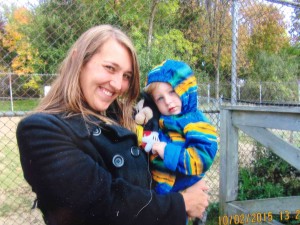Whenever Dr. Hubbell gives me medical advice, I say, stick with French.
 History is well-paved with know-it-alls who fail tremendously when they get out of their field (Linus Pauling and vitamin C).
History is well-paved with know-it-alls who fail tremendously when they get out of their field (Linus Pauling and vitamin C).
Stick to what you know, be good at it, and view the rest of the world with wonderment.
After Mendel’s law of genetics were rediscovered in the early 1900s, societies soon embraced the notion of eliminating undesirables.
About 20 years ago, I gave a talk at a Canadian Association of Science Writers’ meeting, and suggested that Nazism was an extension of what was being talk about in UK journals in the 1920s.
There were gasps, but I was right.
Today it’s the Internet, and people will take whatever evidence they can find to support pre-existing views.
According to An Dornfeld of Public Radio East: News and Classical Network, in Seattle, blackberries are as much a part of the view as the Puget Sound — the twisting brambles so ubiquitous, they’re as likely to vex gardeners as delight them.
The tale behind the city’s blackberries turns out to be equally tangled. It starts at the end of the 19th century, at a time when American life was changing dramatically.
People were moving from rural areas to towns and cities, including Seattle. Industrialization was creating a new middle class.
Down the coast in Santa Rosa, Calif., an eccentric guy named Luther Burbank was hard at work on his experimental farm. Burbank didn’t have any formal training, but he was working feverishly to breed strange and wonderful new kinds of plants.
 “He realizes the growing middle class is going to want to have fresh fruits and vegetables,” says Phillip Thurtle, who teaches in the University of Washington’s Comparative History of Ideas program. “They’re not going to want to eat canned beans. They’re going to want to eat fresh beans all the time. But in order to do that, they’re going to have to be able to be shipped.”
“He realizes the growing middle class is going to want to have fresh fruits and vegetables,” says Phillip Thurtle, who teaches in the University of Washington’s Comparative History of Ideas program. “They’re not going to want to eat canned beans. They’re going to want to eat fresh beans all the time. But in order to do that, they’re going to have to be able to be shipped.”
Thurtle says Burbank set out to create new varieties of fruits and vegetables that would be delicious and prolific – and that could withstand the voyage on the nation’s new transcontinental railroad.
Burbank sold his hundreds of plant creations through catalogs with pictures of shiny fruit and shinier superlatives.
A potato Burbank invented in the 1870s, called the Burbank, later mutated into a potato called the Russet Burbank. It’s the most widely grown potato in America today.
Thurtle says that Burbank was also working on another large-scale project: the thornless blackberry — “kind of the parallel to his spineless cactus or his stoneless plum. He wanted to take the rough spots out of nature, to domesticate it for middle-class lives.”
Burbank traded seeds with fellow collectors from around the world. In a package from India, he found seeds for a huge blackberry with an even bigger flavor.
Burbank named it the Himalaya Giant (even though it’s actually believed to be from Armenia). And he found that this blackberry grew like nobody’s business – but only in temperate areas, like the Pacific Coast. So in 1894, he offered the berry in a special circular he sent buyers in mild climates. It was popular.
By the early 1900s, the Himalaya Giant – which would eventually be known as the Himalayan blackberry – was especially thriving in the Puget Sound region.
Thurtle says Burbank’s business was thriving, too. Everyone wanted to see his plant laboratory. He was hanging out with Thomas Edison (light bulb) and Henry Ford (Model T).
Burbank had become an international celebrity. He was so successful at breeding plants that he became interested in applying the same principles … to people. And that’s where his tale gets problematic.
He started selling a new book that he’d written in his catalogs, The Training of the Human Plant.
Burbank wrote that the crossing, elimination and refining of human strains would result in “an ultimate product that should be the finest race ever known.”
He considered the U.S. the perfect place to practice eugenics, because, at the turn of the century, there were immigrants coming from all over the world. He wrote:
“Look at the material on which to draw. Here is the North, powerful, virile, aggressive, blended with the luxurious, ease-loving, more impetuous South.
“The union of great native mental strength, developed or undeveloped, with bodily vigor, but with inferior mind.”



